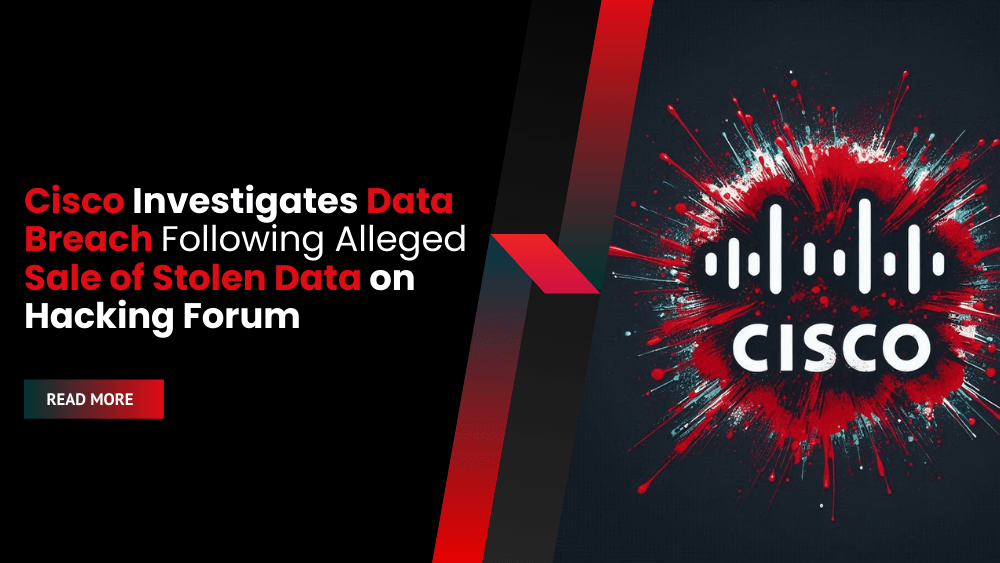A Major Security Incident Involvinf Data Breach in CIsco Systems Is Under Investigation
Cisco is currently investigating a potential data breach after a threat actor, known as “IntelBroker,” claimed to have sold stolen Cisco data on a hacking forum. The alleged breach, which reportedly occurred on October 6th, 2024, involved a significant amount of sensitive information.
A Cisco spokesperson confirmed the investigation, stating, “Cisco is aware of reports that an actor is alleging to have gained access to certain Cisco-related files. We have launched an investigation to assess this claim, and our investigation is ongoing.”
This statement follows public claims by IntelBroker, who asserted that they, along with two other individuals (“EnergyWeaponUser” and “zjj”), successfully compromised Cisco’s systems.
The Scope of the Alleged Breach: A Treasure Trove of Sensitive Data
The alleged stolen data encompasses a wide range of sensitive information, posing a significant security risk. According to IntelBroker’s post on the hacking forum, the compromised data includes:
- GitHub projects
- GitLab projects
- SonarQube projects
- Source code
- Hard-coded credentials
- Certificates
- Customer source code (SRCs)
- Cisco confidential documents
- Jira tickets
- API tokens
- AWS private buckets
- Cisco technology SRCs
- Docker builds
- Azure storage buckets
- Private and public keys
- SSL certificates
- Cisco premium products

Alleged Cisco data leaked on a hacking forum
Source: BleepingComputer
IntelBroker further substantiated their claims by sharing samples of the allegedly stolen data, including a database, customer information, various customer documents, and screenshots of customer management portals. The methods used to obtain this data remain undisclosed.
Possible Connections to Previous Breaches and the Ongoing Investigation
This incident raises concerns about potential links to previous breaches. IntelBroker has a history of selling or leaking data from various companies, including T-Mobile, AMD, and Apple.
Sources familiar with those incidents suggested the data was stolen from a third-party managed services provider specializing in DevOps and software development. Whether the Cisco breach is related to these earlier incidents is currently unknown. Cisco’s investigation is ongoing, and further details are expected to emerge as the investigation progresses.
The impact of this potential breach on Cisco’s customers and the broader security landscape remains to be fully assessed. The disclosure of hard-coded credentials, source code, and customer data represents a serious threat, potentially leading to further exploitation and financial losses.
The ongoing investigation will be crucial in determining the full extent of the compromise and implementing appropriate security measures to prevent future incidents. The theft of source code and private keys could have far-reaching consequences, impacting the integrity and security of Cisco’s products and services.
Conclusion
The Cisco data breach investigation highlights the ever-evolving nature of cyber threats and the need for continuous vigilance in protecting sensitive information. The alleged scope of the breach, encompassing source code, credentials, and customer data, underscores the critical importance of robust security protocols and proactive threat detection. The ongoing investigation will undoubtedly shed more light on the specifics of the breach and the extent of the impact. This incident serves as a reminder to all organizations to prioritize cybersecurity measures and regularly assess their vulnerability to potential attacks.









